Choosing the Right Contactor or Relay for UAE & GCC Projects
In any electrical system, contactors and relays function as electrically operated switches, but they are engineered for vastly different roles. A relay acts as a low-power messenger, controlling one circuit with a small signal from another. A contactor is the muscle, built to handle high-power industrial loads. For engineers, panel builders, and procurement teams in the UAE and GCC, understanding this distinction is critical for designing safe and reliable systems that withstand our demanding climate.
The Brain and The Brawn of Electrical Control
Modern control systems, from a simple pump to a complex manufacturing line, divide work between control and power. Relays and contactors are the physical embodiment of this division—the brain and the brawn.
Imagine a supervisor (the relay) giving a quick command to a heavy machinery operator (the contactor). The supervisor isn’t lifting anything; they are just sending the signal. That's the relay's job. It operates on low power, taking a small control signal from a PLC or sensor and turning it into an action, like switching another circuit on or off. This makes it perfect for logic, signaling, and controlling other small electrical components in the UAE.
The contactor is the one handling the brute force of high-amperage, high-voltage circuits.
How They Work: Same Principle, Different Scale
Both devices operate on the same elegant principle: electromagnetism. A small control current flows through a coil, creating a magnetic field. This magnetic force pulls a set of contacts together, closing a separate, more powerful circuit.
This infographic shows the basic concept. A low-power control signal activates the coil to manage a much larger main power circuit, a core concept in any energy management solution in Dubai.

While the mechanism is universal, the key difference lies in scale and construction. A relay is a precise instrument for signaling. A contactor is a robust beast, built with features to manage the intense physical demands of high power, like a high-current SMPS power supply. This technology has evolved, with modern alternatives like solid-state relays that operate silently and offer an incredibly long lifespan.
Key Distinctions in Construction and Application
The physical differences between contactors and relays define their roles and are essential for safety and reliability, especially under the harsh conditions of the GCC.
- Load Capacity: Relays are typically rated for currents below 15A. Contactors handle currents from 15A up to thousands of amperes, making them the go-to choice for motors, heavy-duty industrial lighting, and large HVAC units found across the UAE.
- Arc Suppression: Switching high-power loads creates a dangerous electrical arc. Contactors are built with arc chutes to safely extinguish these arcs, protecting the equipment and ensuring a long service life. This feature is critical for high-power applications in the region.
- Safety Features: Contactors often have spring-loaded contacts to ensure a rapid, clean break in the circuit, preventing contacts from welding together under heavy load. They also frequently include auxiliary contacts for feedback to control systems and safety interlocks.
Contactor vs Relay At a Glance
This table summarises the primary role and application of each component. It's a quick reference for panel builders and procurement specialists to ensure the right component is selected for the job.
| Characteristic | Relay (The Signal) | Contactor (The Muscle) |
|---|---|---|
| Primary Function | Control and signaling | High-power switching |
| Typical Current Rating | Below 15A | 15A to thousands of amps |
| Primary Use Cases | Logic circuits, automation, controlling contactors | Motors, heaters, industrial lighting, HVAC |
| Arc Suppression | Not required | Essential; built-in arc chutes |
| Auxiliary Contacts | Sometimes available | Commonly included for control logic |
Choosing between a relay and a contactor comes down to understanding the specific application. Using the wrong component is not just inefficient—it can lead to catastrophic equipment failure and serious safety hazards.
Digging Into Relay Technology for Today's Automation

If contactors are the muscle, relays are the brains and nerves of an electrical system. They are the precision instruments that make modern automation possible, translating low-power signals into decisive actions. For any engineer in the UAE designing sophisticated control systems, understanding the different relay types is non-negotiable for building reliable and efficient solutions.
The Classic Workhorse: Electromagnetic Relays
The most familiar relay is the electromagnetic relay. It operates on a simple principle: a small current energizes a coil, creating a magnetic field that physically pulls a metal lever (the armature) to open or close contacts. That audible "click" is the sound of an electromagnetic relay at work.
Why are they so common?
- Tough and Budget-Friendly: They are inexpensive and resilient to voltage spikes and electrical noise, making them ideal for general-purpose control tasks.
- Total Electrical Isolation: The physical air gap between the control and load circuits provides excellent isolation, a critical safety feature.
The trade-off is their mechanical nature. Moving parts wear out, giving them a finite lifespan and making them vulnerable to heavy vibration.
The Silent Performer: Solid-State Relays (SSRs)
The modern alternative is the Solid-State Relay (SSR), which has no moving parts. It uses semiconductor components like thyristors or transistors to switch the load, resulting in silent, lightning-fast operation.
Key Takeaway: The biggest advantage of an SSR is its staggering lifespan. With no mechanical parts to wear down, an SSR can handle tens of millions of cycles, making it perfect for applications with high-frequency switching.
However, SSRs produce more heat and are more sensitive to voltage spikes. This requires careful heat management with heat sinks and proper circuit protection—a crucial design consideration for panel builders in Dubai, where high ambient temperatures are a given. While relays are excellent for control, don't confuse their role with other protective devices. See our guide on relay vs a fuse in an electrical system for more.
The Precision Specialist: Reed Relays
When an application demands precision, low power draw, and survival in harsh environments, the reed relay is the champion. Two tiny ferromagnetic reeds are sealed inside a glass tube filled with an inert gas. An external magnetic field from a coil draws the reeds together to complete the circuit.
This hermetically sealed design offers unique advantages:
- Incredible Reliability: The sealed contacts are protected from dust, humidity, and corrosion—a massive benefit in the coastal and desert climates across the UAE and KSA. A high IP rating is built-in.
- Vibration-Proof: Their small size and low mass make them practically immune to mechanical shock.
- Low Power Consumption: They require very little energy, ideal for battery-powered equipment.
These traits are driving their adoption in cutting-edge industries, contributing to a projected market growth in the Middle East and Africa of around 6.8% CAGR between 2025 and 2034.
Understanding the Contactor as an Industrial Workhorse
While relays handle delicate control signals, contactors are the undisputed heavyweights of the electrical industry. They are the industrial workhorses built to safely and repeatedly switch high-power circuits. From manufacturing plants in Jebel Ali to the enormous HVAC systems cooling a Dubai skyscraper, contactors are the critical link between control logic and powerful machinery.
A contactor is not just a big relay. Its design is engineered for durability and safety under extreme electrical stress, enabling it to handle the immense power needed for large motors, industrial lighting, and capacitor banks.
Anatomy of a High-Power Switch
A contactor's internal components are purpose-built to manage the intense forces of switching high currents. Understanding these parts is key to system safety.
- Main Contacts: These are the muscle, made from materials that resist the intense heat and potential welding from electrical arcing.
- Auxiliary Contacts: These "sidekick" contacts are physically linked to the main ones but electrically separate. They are essential for sending status signals back to a PLC or creating safety interlocks.
- Arc Suppression System: This is the most critical safety feature. Contactors use arc chutes—a series of metal plates that stretch, cool, and extinguish the powerful arc created when contacts separate under load, preventing catastrophic damage.
A DC arc is much harder to extinguish than an AC arc because DC doesn't naturally pass through zero volts. This is why it is absolutely crucial to use a DC-rated contactor for DC loads. Its arc suppression system is specifically designed for the continuous energy of a direct current arc.
Specialised Contactors for Specific GCC Challenges
Different high-power loads require specialized contactors. In the GCC, two types are particularly relevant due to the region's industrial focus and infrastructure demands.
Capacitor Duty Contactors
Improving power factor with capacitor banks is common in the UAE for boosting electrical efficiency. However, this creates a massive, high-frequency inrush current upon switching, which can be up to 200 times the capacitor's normal rating.
A standard contactor would weld its contacts shut. A capacitor duty contactor uses a special set of auxiliary contacts wired to current-limiting resistors. These close first, absorbing the initial inrush before the main contacts close to carry the normal current, protecting the entire system.
Managing Industrial Loads and Market Growth
Contactors are the backbone for controlling motors, heaters, and large-scale lighting—fixtures of the UAE's industrial landscape. The global market for contactors and relays, valued at roughly USD 3.5 billion in 2024, is projected to climb to over USD 5.2 billion by 2033.
Energy efficiency mandates and smart grid investments fuel this demand. As the UAE pushes forward with ambitious infrastructure projects, the need for reliable, high-performance contactors and relays becomes even more vital. To see how market forces are shaping the industry, learn more about the drivers of contactor relay market growth.
How to Select the Right Component for Your Project

Choosing between a contactor and a relay is a critical decision that directly impacts system reliability, safety, and efficiency. For any engineer, panel builder, or procurement manager in the UAE, this choice must account for load behavior, switching frequency, lifespan, and the environmental hurdles unique to the GCC. Overlooking these factors risks premature failure and expensive downtime.
The Core Decision Framework
Start by asking four key questions about your application. The answers will clearly point toward either a relay or a contactor.
-
What's the load current? For loads under 15A, such as in control logic circuits, a relay is the right choice. For anything heavier—motors, HVAC units, or industrial heaters—a contactor is non-negotiable.
-
What kind of load are you switching? An inductive load (like a motor) creates a significant electrical kickback when switched off. These demanding loads almost always require a contactor rated to handle that inductive stress.
-
How often will it switch? For applications with constant switching, a solid-state relay (SSR) with no moving parts is the smartest choice. For less frequent switching, a standard electromagnetic relay or a durable contactor is suitable.
-
What lifespan do you need? If a system must run for years without intervention, the long life of an SSR can justify its higher upfront cost.
Factoring in the GCC's Harsh Environment
The UAE's extreme heat, dust, and humidity must be considered.
Crucial Consideration for the GCC: Standard component ratings are based on moderate ambient temperatures (20-25°C). Inside a panel in Dubai, temperatures can exceed 50°C. This heat forces you to de-rate components, meaning you must choose a contactor or relay with a higher current rating than technically required to ensure safe performance without overheating.
Beyond heat, physical protection is vital. Look for an Ingress Protection (IP) rating of at least IP54 as a baseline to guard against dust and moisture, ensuring reliability in both factory and outdoor installations.
The Importance of Specialized Protective Relays
Modern electrical systems in the UAE require sophisticated protection. Specialized protective relays act as intelligent sentinels, instantly detecting faults like overcurrent, voltage sags, or phase imbalances and isolating the problem to prevent widespread blackouts.
This push for a stable grid is fueling growth in a global protective relay market projected to hit USD 5.1 billion by 2032. For engineers on these projects, specifying the right protective devices is a vital skill. To help, we've created a guide on selecting the right electrical protection relays.
Comparison Table for Practical Selection
This table breaks down the key differences for practical applications in the UAE.
| Selection Criterion | Relay | Contactor |
|---|---|---|
| Typical Load Current | Under 15 Amps | 15 Amps to over 1000 Amps |
| Primary Application | Control logic, signaling, low-power switching | Motor control, HVAC, industrial lighting, capacitor banks |
| Voltage Range | Typically low voltage (AC/DC) | Can handle low to medium voltage (up to 1000V+) |
| Switching Frequency | High (especially SSRs) | Low to moderate |
| Lifespan | High (mechanical) to Extremely High (solid-state) | Moderate to High (designed for millions of cycles) |
| Arc Suppression | Generally not required | Essential feature (arc chutes) for safety and longevity |
| Cost | Lower initial cost | Higher initial cost |
The right choice considers the total cost of ownership—factoring in reliability, longevity, and, above all, safety.
Installation and Maintenance Best Practices for the GCC Climate

Properly installing contactors and relays is fundamental to a safe, reliable, and long-lasting electrical system. For electricians and maintenance teams in the UAE and GCC, getting the installation right is crucial for preventing costly downtime, especially given our demanding climate. This guide offers practical, actionable advice for professionals working in Dubai, Abu Dhabi, and the wider region.
Critical Installation Best Practices
A flawless installation starts with careful planning and precision.
- Verify Control Voltage: Always double-check that the coil voltage of your contactor or relay matches the control circuit's supply to prevent burnout.
- Torque Terminals to Spec: Use a calibrated torque wrench to tighten every terminal to the manufacturer's specified values. This prevents overheating and electrical fires caused by loose connections.
- Ensure Adequate Ventilation: Maintain sufficient space around each component inside the panel for proper air circulation and heat dissipation.
- Use Correctly Sized Wires: Select wire gauges based on the full load current and de-rate for the high ambient temperatures in the GCC to prevent fire risk and voltage drops.
Common Installation Mistakes to Avoid
Even seasoned technicians can make mistakes. Be aware of these common pitfalls.
Mistake 1: Ignoring Inrush Current for Inductive Loads
The initial current spike (inrush current) from inductive loads like motors can be many times higher than the running current. Select your relay or contactor based on this higher inrush value to prevent contact welding.
Mistake 2: Neglecting Environmental Protection
Failing to specify components with the correct IP rating is a critical error in the GCC. Dust and humidity will cause corrosion and short circuits in unprotected enclosures.
Mistake 3: Poor Panel Layout
Avoid placing heat-sensitive relays directly above large, heat-generating contactors. Organize components to keep heat sources away from sensitive control devices.
Expert Tip: For critical applications, cross-reference your calculations with the load manufacturer’s datasheet or call their technical support to confirm compatibility and prevent expensive mistakes.
A Preventive Maintenance Schedule for Longevity
A structured maintenance plan is the best defense against unexpected failures. This simple schedule helps technicians in the UAE spot trouble before it leads to a shutdown.
Quarterly Checks (Every 3 Months):
- Visual Inspection: Look for signs of overheating—discolored plastic, melted insulation, or burn marks.
- Listen for Abnormal Noise: An unusually loud buzzing from a contactor can indicate a coil or mechanical issue.
- Cleanliness: Gently remove accumulated dust from components using a soft brush or low-pressure compressed air.
Annual Checks (Every 12 Months):
- Re-Torque Connections: Verify all terminal connections are tightened to their specified values.
- Check Mechanical Action: With the power off, manually operate the contactor to feel for smooth movement.
- Verify Electrical Performance: Perform a contact resistance test on critical circuits to check for degradation.
By integrating these best practices, you can dramatically improve the durability and performance of your electrical control systems.
Your Partner for Reliable Control Solutions in the UAE
To summarize, relays are for low-power control logic, while contactors are the heavy-lifters for high-power switching. Selecting the right component requires understanding your load, application, and the environmental challenges in the UAE. Even the best component is only as good as its installation and maintenance.
When your project demands proven electrical components in the UAE, GoSwitchgear provides dedicated technical support and project consultations across the GCC.
Final Takeaway: Your system's safety and performance depend on getting this first step right. Ensure every relay and contactor is perfectly matched to its job and the local environment.
Ready to discuss your next project in Dubai or Abu Dhabi? Get in touch with us. We're here to help you build systems that are not just efficient, but fundamentally reliable.
Frequently Asked Questions
When you're deep in a project, practical questions about contactors and relays often arise. For engineers and technicians in the UAE, clear answers are key to keeping projects in Dubai and across the GCC safe and on track.
Can a Contactor Be Used Instead of a Relay?
Technically, yes, in a limited scenario, but it's a bad idea. Contactors are larger, more expensive, and draw more power to energize their coil. It's like using a sledgehammer to hang a picture frame—the wrong tool for the job. Use relays for control circuits and contactors for power circuits to ensure reliability and cost-effectiveness.
What Are Auxiliary Contacts on a Contactor For?
Auxiliary contacts are smaller contacts physically linked to the main power contacts. They are electrically separate and used for low-power signals.
Their critical jobs include:
- Status Signalling: Sending a low-voltage signal to a PLC or indicator light to confirm the contactor's status (on/off).
- Holding Circuits: Creating a "latching" or "seal-in" circuit to keep the contactor's coil energized after a start button is released.
- Safety Interlocks: Preventing another piece of equipment from starting while the first is running—a crucial safety feature.
Why Is Arc Suppression So Important in a Contactor?
When a contactor breaks a high-power circuit, a powerful electrical arc (plasma) forms between the contacts. This arc can reach thousands of degrees, melting or welding the contacts shut.
Key Insight: Uncontrolled arcing will destroy the contactor and create a major fire hazard. Arc chutes are designed to stretch, cool, and extinguish the arc almost instantly, protecting the contactor and allowing it to operate reliably for millions of cycles.
Do I Need a Different Contactor for AC and DC Loads?
Yes, this is non-negotiable. An AC arc is easier to extinguish because the AC voltage wave passes through zero 100 times per second (on a 50Hz supply). A DC arc is a relentless, continuous stream of energy. A DC-rated contactor is built with more aggressive arc suppression systems to handle this stubborn DC arc. Using an AC contactor on a DC load is extremely dangerous and can lead to spectacular failure.
At GoSwitchgear, we provide the expertise to ensure your control panels meet the highest standards of safety and reliability. Check out our wide range of electrical components or contact our technical team for support on your next project in the UAE.


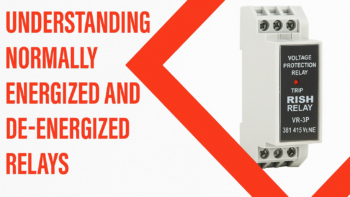
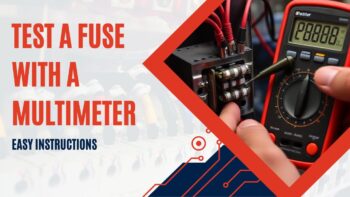
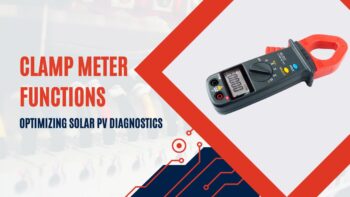
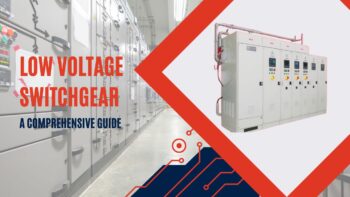

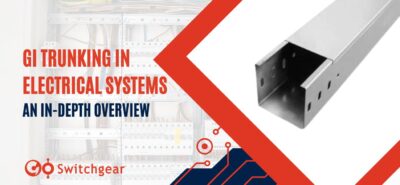

Leave a Reply